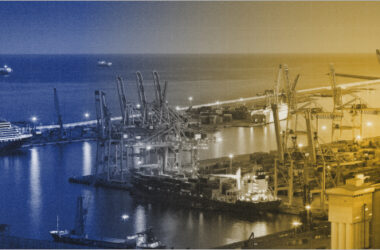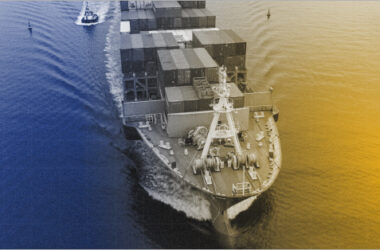Inland Marine Insurance is a type of insurance that covers goods, equipment, and materials while they are in transit over land. Although the name may suggest it involves water transportation, Inland Marine Insurance is actually designed to protect property that is transported over land, such as by truck or train. This type of insurance is particularly useful for businesses that regularly move valuable goods or equipment from one location to another.
Fundamentals of Inland Marine Insurance
A. Definition and Purpose
Inland Marine Insurance is a type of insurance that covers goods and property while they are in transit over land. It is designed to protect businesses that transport goods, as well as businesses that store or handle goods that are in transit. Inland Marine Insurance is not limited to just shipping goods by truck but also covers goods transported by rail, air, and water.
The purpose of Inland Marine Insurance is to provide coverage for goods and property that are not covered by traditional property insurance policies. This type of insurance is especially important for businesses that transport or store high-value goods, such as electronics, artwork, or medical equipment. Inland Marine Insurance can cover a wide range of property, from construction equipment and tools to fine art and jewellery. It can also cover property that is temporarily stored at a location other than the policyholder’s primary business premises. For example, if a contractor stores their tools and equipment at a job site overnight, Inland Marine Insurance can provide coverage in case of theft or damage.
Inland Marine Insurance Policies can be tailored to meet the specific needs of businesses. For example, a policy may cover goods while they are in transit, as well as during loading and unloading. Overall, Inland Marine Insurance offers businesses peace of mind knowing that their valuable property is protected while it is in transit or being stored temporarily.
B. History and Evolution
Inland Marine Insurance has a long history, dating back to the 17th century when it was primarily used to cover goods transported by ship. As transportation methods evolved, so did the need for Inland Marine Insurance. Today, Inland Marine Insurance covers a wide range of goods and property that are transported over land.
In recent years, the use of technology has made it easier for businesses to track and monitor their goods while they are in transit. This has led to the development of specialized Inland Marine Insurance Policies that provide coverage for goods that are being transported using new technologies, such as drones and autonomous vehicles.
Coverage Included in Inland Marine Insurance Policies
Inland Marine Insurance in India typically provides coverage for a variety of properties and goods while they are in transit over land. The coverage is not limited to just transportation but can also extend to cover certain types of property that may be mobile or in transit within a specified area. Do keep in mind that the specific coverage details can vary between insurance companies, so it’s important to review the policy terms and conditions carefully. Here are some common coverage elements included in Inland Marine Insurance Policies in India:
- Transportation Coverage: This type of coverage is designed to protect goods and materials while they are in transit, whether by truck, train, or other means of transportation.
- Installation Coverage: This type of coverage is designed to protect goods and materials while they are being installed or assembled at a job site.
- Equipment Coverage: This type of coverage is designed to protect equipment and machinery that is being transported or used at a job site.
- Electronic Data Processing (EDP) Equipment Coverage: Protects computer equipment and data processing systems while in transit or at various locations.
- Commercial Property Floater: Covers various types of business property while it is being transported.
- Valuable Papers and Records Insurance: Protects important business documents and records against physical loss or damage.
- Jewellers’ Block Insurance: Specifically designed for jewellers, covering their valuable inventory against various risks.
Exclusions in Inland Marine Insurance Policies
Inland Marine Insurance Policies typically cover a wide range of perils. However, there are some exclusions to be aware of, such as:
- Wear and Tear: Inland Marine Insurance Policies typically do not cover damage that occurs due to normal wear and tear.
- Intentional Damage: Policies do not cover damage that is caused intentionally, such as vandalism.
- Acts of War: Policies do not cover losses that occur as a result of war or acts of terrorism.
- Nuclear Hazard: Policies do not cover losses that occur as a result of a nuclear hazard.
- Improper Packaging or Handling: Damage caused by inadequate packaging, ordinary leakage, or improper handling.
- Delay or Loss of Market: Excludes loss resulting from delay, loss of market, or any consequential loss.
- Unexplained Disappearance: Many policies exclude unexplained disappearance, meaning if the insured property cannot be located or its disappearance cannot be explained, it may not be covered.
- Unauthorized Use or Misuse: Damage or loss resulting from unauthorized use or misuse of the insured property.
- Inadequate Maintenance or Neglect: Excludes damage caused by inadequate maintenance or neglect of the insured property.
- Governmental Action: Losses caused by the destruction, confiscation, or seizure of property by order of any government or public authority.
It is important to carefully review the terms and conditions of an Inland Marine Insurance policy to ensure that it provides the coverage that is needed.
Claims Processing in Inland Marine Insurance Policies
Filing a Claim
In the event of a loss, the policyholder must file a claim with their Inland Marine Insurance provider. The claim should include details about the loss, such as the time and place it occurred, the cause of the loss, and any relevant documentation, such as police reports or receipts.
It is important to file the claim as soon as possible to ensure that the insurer can begin the claims process promptly. Delaying the filing of a claim can result in a longer wait time for compensation.
Assessment and Reimbursement
Once the claim has been filed, the insurer will assess the claim to determine the amount of compensation that the policyholder is entitled to receive. The assessment may involve an investigation into the circumstances surrounding the loss, as well as a review of the policy to determine coverage.
If the claim is approved, the policyholder will receive reimbursement for their loss, up to the limits of their policy. The amount of compensation will depend on the nature and extent of the loss, as well as the terms of the policy.
It is important to note that some Inland Marine Insurance Policies may have deductibles, which are amounts that the policyholder must pay out of pocket before the insurer will provide compensation. Policyholders should review their policies carefully to understand their deductible and how it will affect their compensation.
Filing a claim and receiving compensation for a loss under an Inland Marine Insurance Policy can be a straightforward process, as long as policyholders provide accurate and timely information to their insurer.
Choosing the Right Inland Marine Insurance Policy
When it comes to choosing the right Inland Marine Insurance, there are a few things to consider. This section will cover the key factors to keep in mind when assessing your needs and comparing providers and policies.
A. Assessing Your Needs
Before purchasing Inland Marine Insurance, it’s important to assess your needs to determine the type and amount of coverage you require. You may consider the following:
- The type of goods you transport: Different types of goods have different levels of risk associated with them. For example, hazardous materials require more extensive coverage than non-hazardous materials.
- The frequency of transportation: If you transport goods regularly, you may need more coverage than if you only transport goods occasionally.
- The distance of transportation: The further you transport goods, the greater the risk of damage or loss, so you may need more coverage for longer distances.
- The value of the goods: The higher the value of the goods, the more coverage you’ll need to protect your investment.
By considering these factors, you can determine the appropriate level of coverage for your needs.
B. Comparing Providers and Policies
Once you’ve assessed your needs, you can begin comparing providers and policies. Here are a few things to keep in mind:
- Reputation: Look for providers with a good reputation in the industry. Check reviews and ratings from other customers to get an idea of their level of service.
- Coverage options: Make sure the policy you choose covers the specific types of goods you transport and the risks associated with them.
- Deductibles: Consider the deductible amount and how it will affect your overall costs. A higher deductible may result in lower premiums, but you’ll pay more out of pocket if you need to make a claim.
- Limits: Check the policy limits to ensure they’re sufficient to cover the value of your goods.
- Cost: Compare premiums from different providers to find the best value for your needs.
By comparing providers and policies based on these factors, you can make an informed decision and choose the right Inland Marine Insurance for your business.
Conclusion
Understanding the nuances of Inland Marine Insurance is crucial for businesses and individuals alike. This specialized form of coverage goes beyond traditional property insurance, offering protection for movable or specialized property, wherever it may be. Inland Marine Insurance fills the gaps left by other policies, providing a safety net for valuable assets on the move. However, just like any insurance, a careful review of policy terms and conditions is essential. By grasping the scope of coverage and recognizing potential exclusions, policyholders can make informed decisions to safeguard their assets and mitigate risks effectively.
Frequently Asked Questions (FAQs)
- What is Transportation Insurance?
Transportation insurance is one of the most common types of Inland Marine Insurance. It covers goods that are in transit, including cargo that is being transported by truck, train, or other means of transportation. This type of insurance can cover a range of risks, including damage to the cargo due to accidents, theft, or other causes.
2. What types of property are typically covered by Inland Marine Insurance?
Inland Marine Insurance covers a wide range of property, including but not limited to construction equipment, fine art, valuable instruments, mobile medical equipment, and more. It is versatile and can be tailored to meet the unique needs of different industries and assets on the move.
3. How does Inland Marine Insurance differ from standard property insurance?
Inland Marine Insurance differs from standard property insurance in that it provides coverage for property that is mobile or in transit. Standard property insurance typically covers assets at a fixed location, whereas Inland Marine Insurance is designed for property that moves or is frequently transported.







